Death comes to us all, but how different cultures honor their dead reveals fascinating insights about their beliefs and values.
From sky burials to dancing with ancestors, these rituals showcase humanity’s diverse approaches to saying goodbye.
Join me as we explore ten remarkable funeral traditions that might surprise you, challenge your perspective, and deepen your understanding of how people around the world face mortality.
1. Tibetan Sky Burial: Returning to Nature

High on Tibetan mountaintops, a ritual unfolds that might shock Western sensibilities but makes perfect sense in its cultural context. After death, the body is placed on a sacred site where vultures—considered holy creatures—consume the remains.
This practice stems from practical considerations in Tibet’s rocky landscape where burial is difficult, but also from profound Buddhist beliefs about impermanence. The body, merely an empty vessel after death, provides one final act of generosity by feeding other living beings.
Monks often accompany the ceremony, chanting prayers as the soul continues its journey toward rebirth. For Tibetans, this represents the ultimate gift—allowing your physical form to sustain life even after you’re gone.
2. Famadihana: Dancing with Ancestors in Madagascar
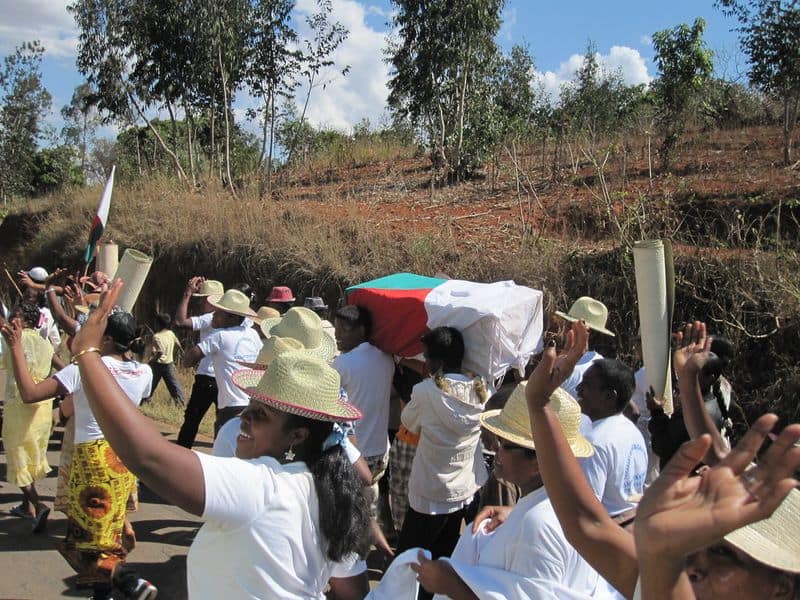
Every five to seven years, families in Madagascar’s highlands participate in a joyous celebration called Famadihana—the ‘turning of the bones.’ Relatives exhume their ancestors from family crypts, rewrap them in fresh silk shrouds, and—most surprisingly—dance with them to live music.
Far from macabre, this festival brims with laughter, feasting, and reunion. Children play near their great-grandparents’ remains while elders share stories about the deceased. The ritual strengthens family bonds across generations and dimensions.
Malagasy people believe this ceremony prevents ancestors from being forgotten and helps their spirits join the world of ancestors completely. In recent years, this practice has declined due to economic factors and religious influence, making it all the more precious.
3. Fantasy Coffins of Ghana: Personalized Final Journeys
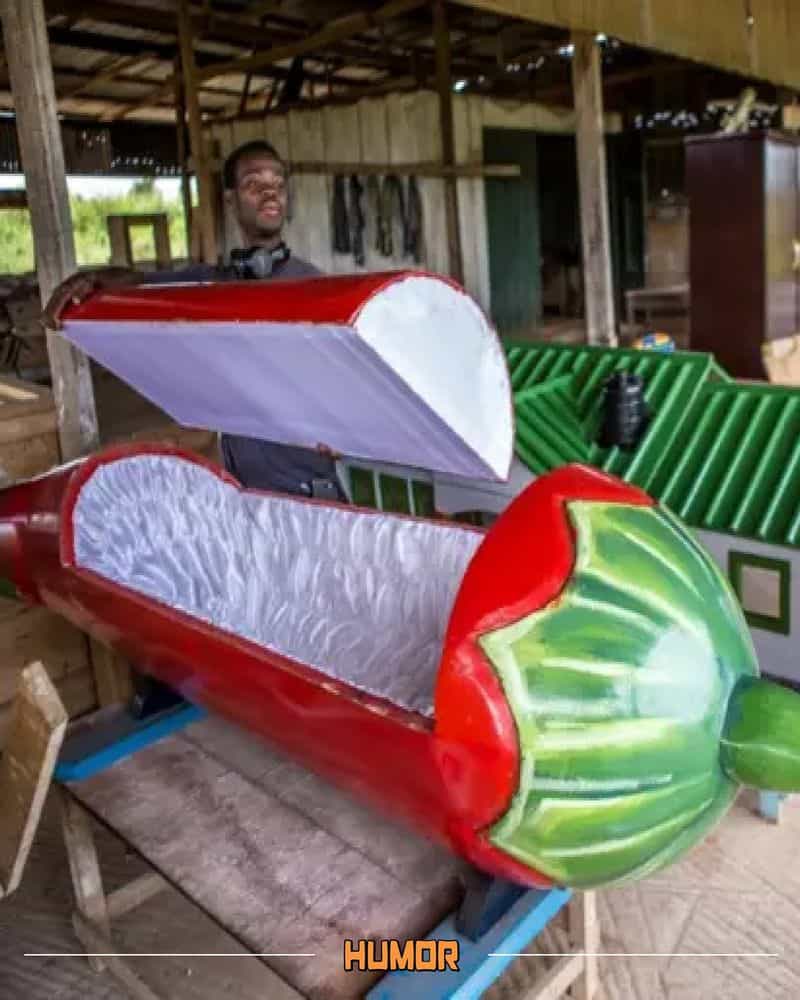
Craftsmen in Ghana’s Ga communities transform ordinary coffins into extraordinary works of art that celebrate the deceased’s life passions. A fisherman might be buried in a giant wooden fish, while a pilot rests in a meticulously crafted airplane.
These ‘abebuu adekai’ (boxes of proverbs) emerged in the 1950s when carpenter Kane Kwei built a cocoa pod-shaped coffin for his grandmother who grew cocoa. Today, these vibrant creations—shaped as everything from mobile phones to beer bottles—can take weeks to complete and cost thousands of dollars.
Beyond artistic expression, these coffins represent status and ensure ancestors arrive in the next world in style. Some pieces have become so renowned that museums worldwide display them as contemporary art.
4. Hanging Coffins of the Philippines: Elevated Resting Places
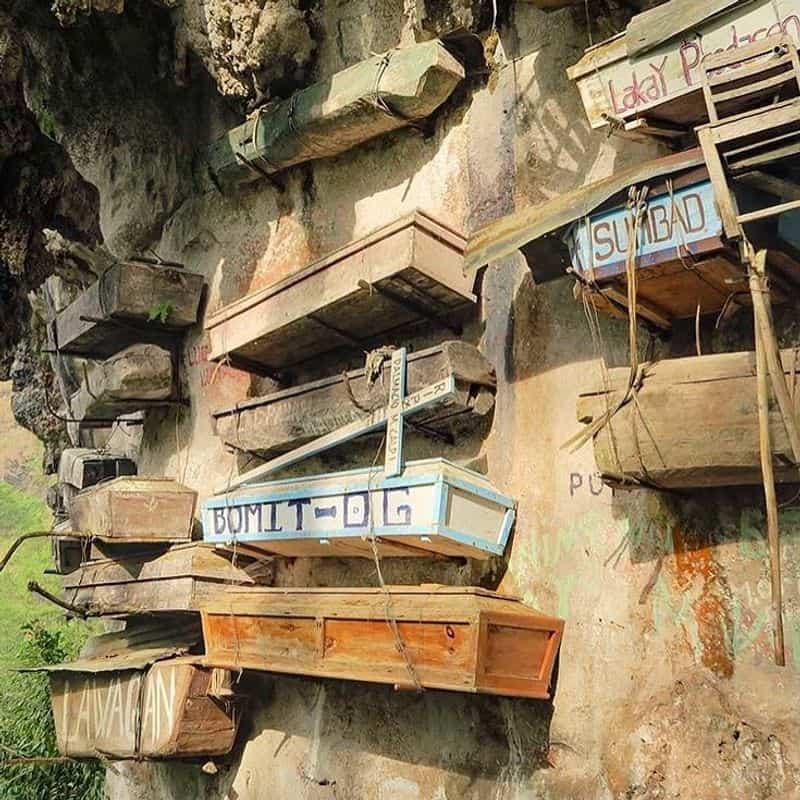
Along the limestone cliffs of Sagada in the northern Philippines, wooden coffins hang mysteriously from rocky outcrops, some dating back more than 2,000 years. The indigenous Igorot people believe that placing their dead higher brings them closer to ancestral spirits.
Creating these suspended resting places requires remarkable effort. The deceased is first positioned in a fetal position—symbolizing how they entered the world—then placed in a coffin carved from hollowed pine logs. Young men risk their lives to secure these coffins to the cliff face using ropes and pegs.
This tradition also served practical purposes, protecting bodies from wild animals and floods. Though rarely practiced today, these hanging coffins remain powerful cultural symbols and draw respectful visitors from around the world.
5. Self-Mummification: Japan’s Living Buddhas
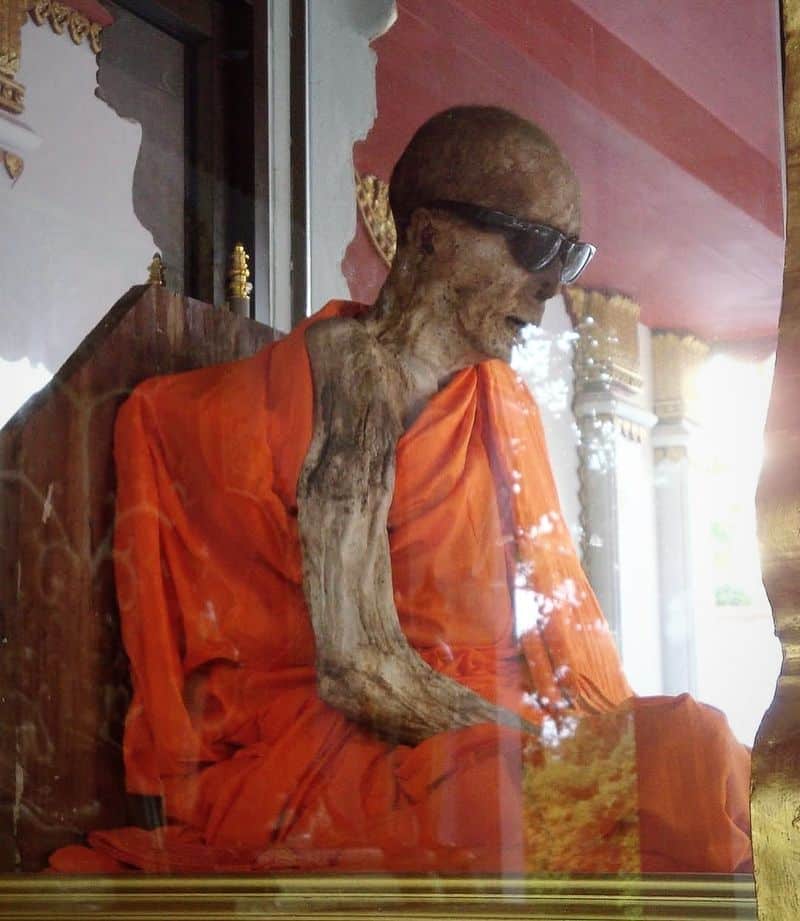
Between the 11th and 19th centuries, certain Japanese Buddhist monks embarked on a grueling path toward becoming ‘living Buddhas’ through self-mummification. This extreme ascetic practice began years before death with a strict diet of nuts, seeds, and tree bark to remove body fat.
Later phases included drinking toxic lacquer tea to make their bodies inhospitable to decay-causing organisms. In their final days, monks entered underground chambers with only a bell and air tube, meditating until death while sitting in the lotus position.
When the bell stopped ringing, other monks sealed the chamber. Years later, if the body remained preserved, it was considered evidence of successful transformation into a Buddha. About two dozen such mummies exist today, revered as sacred objects in Japanese temples.
6. Sati: India’s Forbidden Widow Sacrifice

Among history’s most controversial death rituals, sati involved a widow immolating herself on her husband’s funeral pyre. This practice, now outlawed in India, was considered by some as the ultimate expression of wifely devotion, allowing the couple to reunite in the afterlife.
The word ‘sati’ actually means ‘good woman’ in Sanskrit, reflecting how society viewed this sacrifice. Though never universally practiced across India, it reached its peak during medieval times, particularly among ruling classes in certain regions like Rajasthan.
British colonial authorities began restricting sati in 1829, and independent India strictly prohibited it in 1956. Memorial stones called ‘sati stones’ can still be found throughout India, marking sites where this ritual once occurred and serving as reminders of this complex cultural legacy.
7. Towers of Silence: Zoroastrian Sky Burials
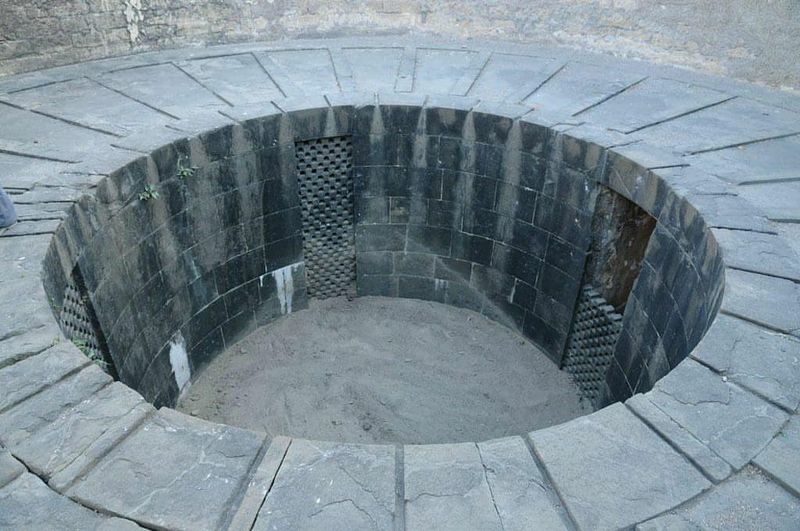
Zoroastrians, followers of one of the world’s oldest continuously practiced religions, traditionally place their dead atop circular structures called dakhmas or ‘Towers of Silence.’ These open-air structures feature concentric rings where bodies decompose naturally through exposure to sun and scavenging birds.
This practice stems from Zoroastrian beliefs that dead bodies are unclean and would contaminate sacred elements—earth, fire, and water. The circular design includes an outer ring for men, middle for women, and center for children, with a central pit collecting bones after decomposition.
Modern challenges including urban development, declining vulture populations, and changing sensibilities have made this practice increasingly rare. In Mumbai, some Parsi communities now use solar concentrators to accelerate decomposition while maintaining traditional principles.
8. Ritual Finger Amputation: The Dani People’s Grief
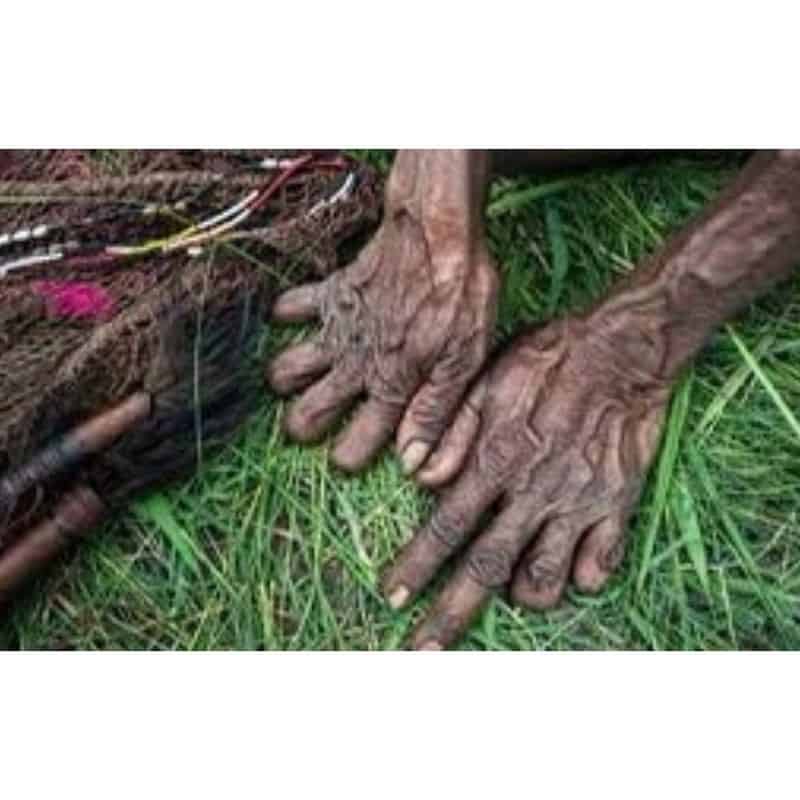
When death visits the Dani tribe of Papua New Guinea’s remote highlands, women who lose family members express their grief through a shocking physical sacrifice. They amputate the top segment of one finger using a stone axe, believing this physical pain helps process emotional suffering.
This practice, called Ikipalin, symbolizes the severing of connections with the deceased while also representing how death diminishes the community. Elder women often have multiple amputations, their hands serving as visible records of losses endured throughout their lives.
Though largely discontinued since the 1990s due to government restrictions and changing cultural attitudes, many older Dani women still bear these permanent markers of mourning. Anthropologists view this practice as an extreme example of how cultures physically manifest internal grief.
9. Viking Ship Burials: Sailing to Valhalla
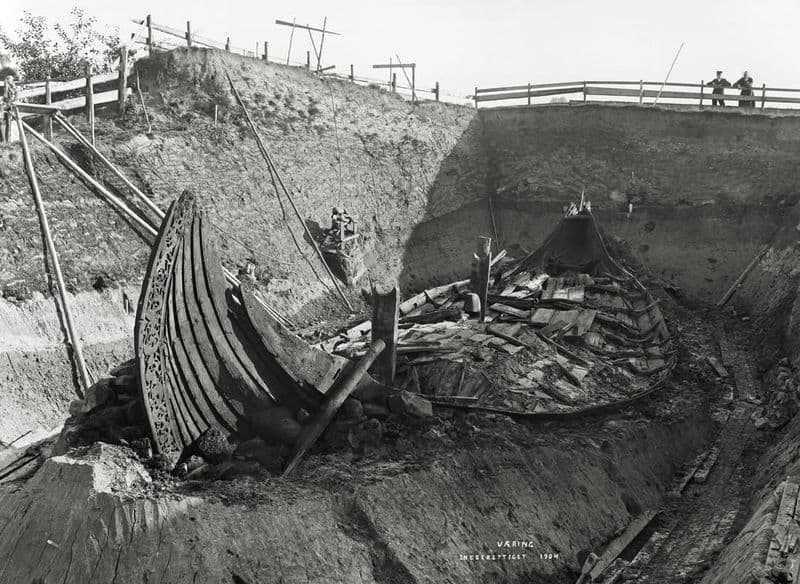
For elite Viking warriors, death meant embarking on one final voyage. Archaeological discoveries reveal elaborate ship burials where chieftains were laid to rest in full-sized vessels alongside weapons, jewelry, food, and sometimes sacrificed animals or servants.
The most famous example, Norway’s Oseberg ship, contained two women surrounded by intricate wood carvings and everyday items for the afterlife. These vessels were either buried under enormous mounds or, in more dramatic cases, set ablaze and pushed out to sea.
Vikings believed this ceremonial sendoff helped transport the deceased to Valhalla, the great hall where warriors feasted with Odin. Modern reconstructions of these rituals, minus human sacrifice, occasionally occur at Viking festivals, keeping this ancient tradition’s memory alive through respectful reenactment.
10. Endocannibalism: Consuming the Beloved Dead
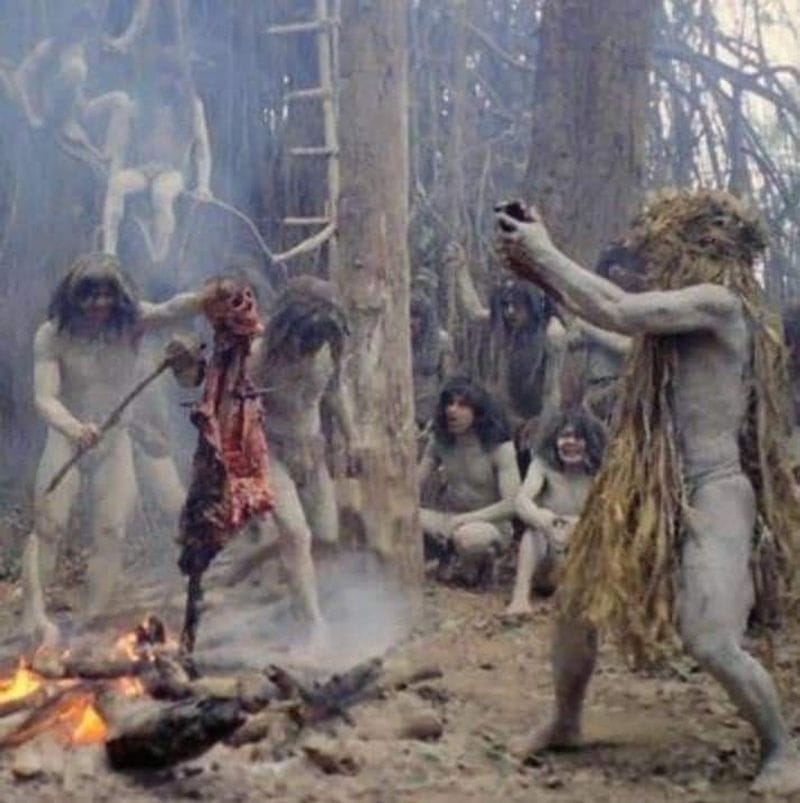
Among history’s most misunderstood death rituals, endocannibalism—the consumption of deceased community members—was practiced not out of cruelty but profound respect. The Wari’ people of Brazil’s Amazon, for instance, believed eating a loved one’s remains was far more dignified than leaving them to rot in the ground.
This practice typically involved roasting and consuming specific body parts during funeral ceremonies. Family members might refuse to participate due to overwhelming grief, while more distant relatives handled these sacred duties.
Anthropologists note that these cultures viewed the body and spirit as deeply connected; consuming the physical form helped transfer the deceased’s qualities to living relatives. Though largely extinct today due to missionary influence and changing cultural norms, endocannibalism challenges Western assumptions about what constitutes respectful treatment of the dead.

